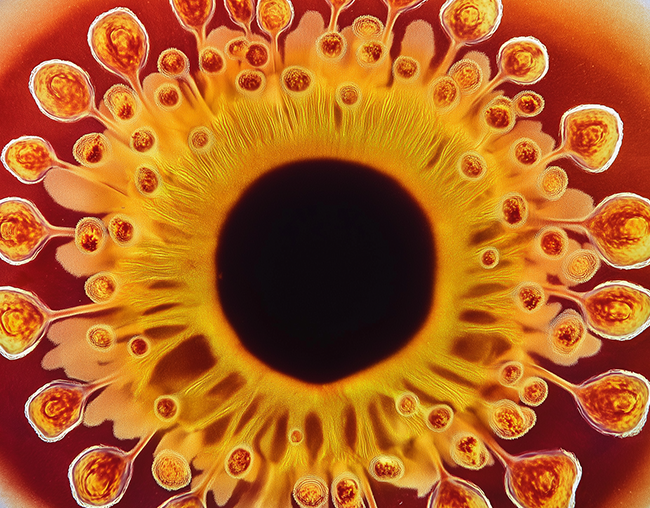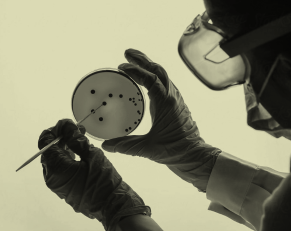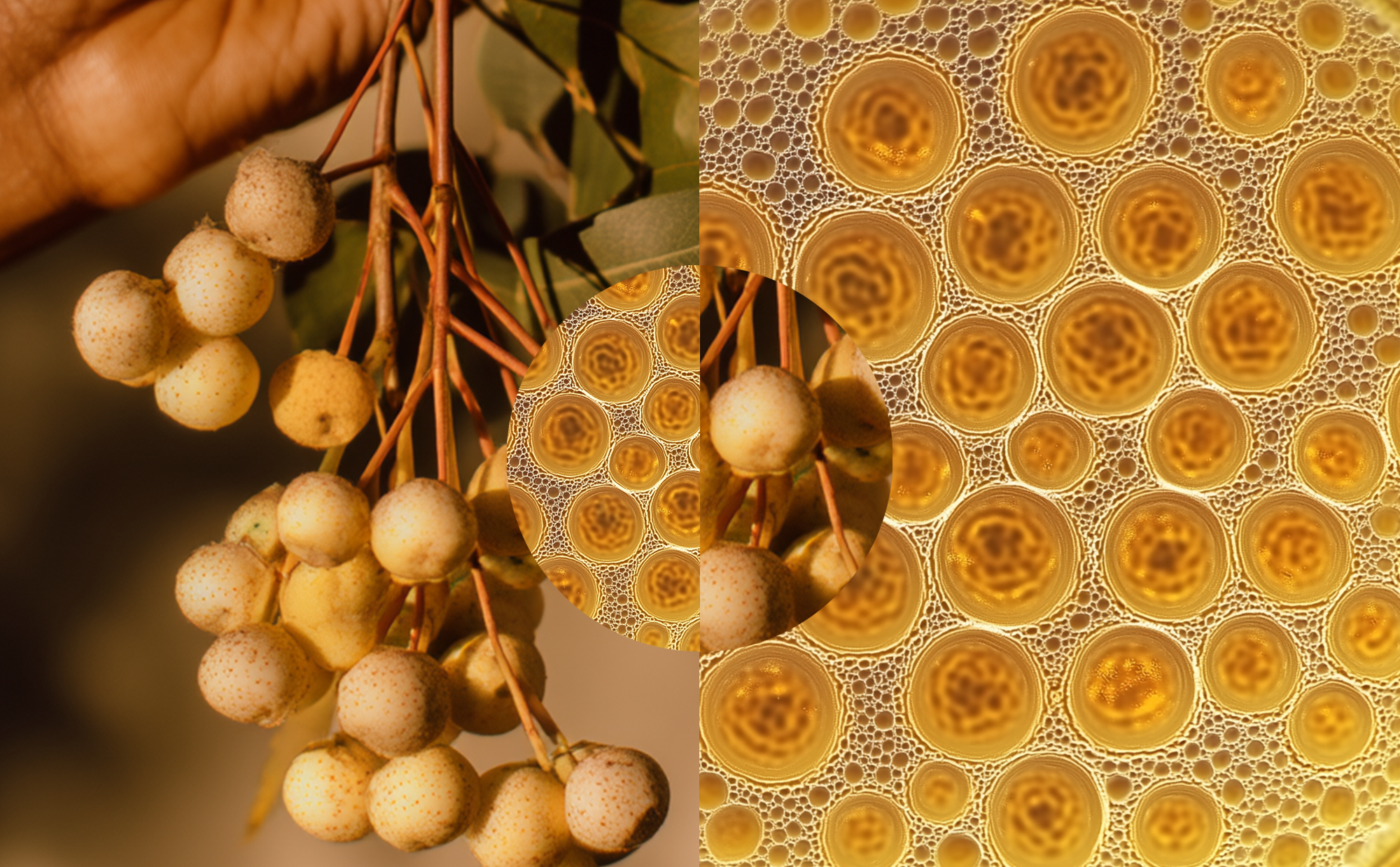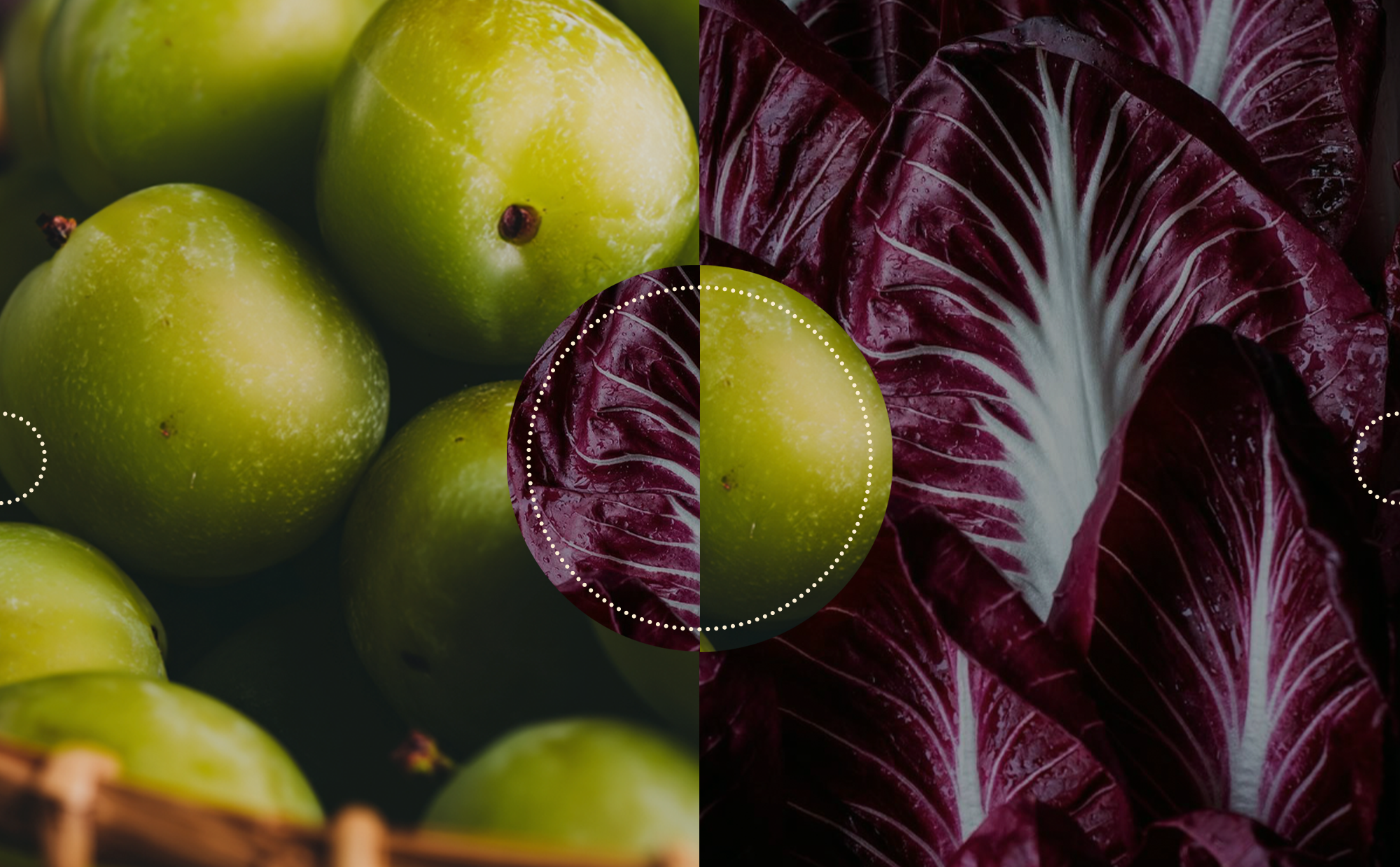How Aussie Native Plants Feed Your Microbiome
We’re increasingly learning that excellent overall health begins in the gut.¹ While fibre, fermented foods, and probiotics often steal the spotlight, there's another quiet achiever worth celebrating – polyphenols.
Polyphenols are natural, plant-based compounds found in foods like berries, teas, cocoa, herbs – and yes, our very own Aussie bush foods! They’re responsible for the vibrant colours in fruits and veggies and form part of the plant’s built-in defence system against stress.
Australia’s native plants have evolved in harsh conditions marked by heat, drought, and nutrient-poor soils. These wild foods have developed some of the most concentrated and bioactive polyphenols on the planet,² and have potent antioxidant, anti-inflammatory and microbiome-modulating powers.³
These clever compounds don’t just benefit the plant – they support us too. When we eat polyphenol-rich foods, they help to:
- Neutralise oxidative stress
- Reduce inflammation
- Promote the growth of beneficial gut bacteria
- Support gut lining integrity
- Modulate immune function
Interestingly, most polyphenols bypass absorption in the small intestine. Instead, they make their way to the large intestine where your gut microbes get to work, transforming them into powerful, health-promoting metabolites.⁴
From a broader health perspective, polyphenols are part of a larger family of plant-derived bioactives. While research is still emerging, there's growing evidence that polyphenol intake may support everything from improved cognitive function and cardiovascular health to better mood and even sleep quality.⁵
Enter: Australian Native Plants
Fruits like Kakadu plum, bush tomato, Davidson’s plum, and finger lime have adapted to thrive in harsh environments. This resilience has led to the development of incredibly rich phytochemical profiles – especially when it comes to polyphenols. Let’s explore what that means for your gut, and your overall health. A recent review of native Australian fruits and vegetables highlighted their nutritional and phytochemical richness, suggesting their potential use as functional foods for health and wellbeing, including gut health support.³
Let’s Break Down a Few Standout Species:
Kakadu Plum (Terminalia ferdinandiana)
Often hailed as Australia’s superfood queen, Kakadu plum contains the highest recorded vitamin C content of any fruit in the world (up to 3150 mg/100g dry weight).⁶ It also contains rich levels of ellagic acid, a polyphenol known to protect the gut lining and support microbial balance. In vitro studies have shown Kakadu plum extracts inhibit Escherichia coli and Staphylococcus aureus, supporting a healthy microbial balance.⁶ Its polyphenols may also play a role in reducing inflammation in the gut and protecting against oxidative damage.
Bush Tomato (Solanum centrale)
Beyond their robust, earthy flavour and culinary versatility, bush tomatoes are loaded with antioxidants, especially polyphenols and vitamin E. Bush tomato contains one of the highest levels of vitamin E at 4.6 mg per 100g — a stark contrast to cherry tomatoes, which contain only 0.2 mg per 100g.³ Studies suggest that vitamin E may influence the gut microbiome by increasing helpful bacteria like Firmicutes and Roseburia and reducing potentially harmful ones like Proteobacteria and Bacteroides, especially when combined with iron.⁷ However, more research is needed to fully understand these effects and how vitamin E interacts with gut bacteria.
Finger Lime (Citrus australasica)
With its unique "lime caviar" texture and tangy flavour, finger lime is a source of vitamin C, polyphenols, flavonoids and anthocyanins – especially in the pulp of cultivars like Rhyne Red and in the peel across most varieties.⁸ The antioxidant-rich peel contains notably higher levels of total phenolics and phenolic acids, which may offer gut health benefits by supporting microbial diversity and reducing oxidative stress in the gut. While the juicy pulp offers a burst of flavour and vitamin C, the peel may hold untapped potential as a functional ingredient with prebiotic-like properties that could influence the gut microbiome.
The Gut–Polyphenol Connection: How It All Works
Once polyphenols reach the colon, your gut bacteria break them down into smaller metabolites,⁹ which can:
- Promote short-chain fatty acid (SCFA) production (like butyrate), crucial for colon health
- Reduce gut permeability
- Decrease pro-inflammatory cytokines in the GI tract
- Increase mucosal integrity and barrier function
Polyphenols can also act as prebiotics,¹⁰ selectively feeding the beneficial bacteria and inhibiting the growth of pathogens. It’s a symbiotic relationship – our gut microbes need polyphenols, and polyphenols need microbes to unlock their full potential.
Indigenous Wisdom, Modern Science
It’s worth noting that many of these native plants have long been consumed by First Nations Australians for their nutritional, medicinal, and ceremonial value. Science is only just beginning to catch up to this traditional knowledge. Ongoing research is working to bridge cultural knowledge with evidence-based practice, with a strong emphasis on ethical sourcing, sustainability, and respecting Indigenous intellectual property and land custodianship.
Practical Tips: How to Add Native Polyphenols to Your Diet
Native foods are slowly becoming more available in health food stores, farmers’ markets, and online.
Here’s how you might start incorporating them:
- Add Kakadu plum powder to smoothies or chia puddings
- Use finger lime pearls on top of salads or seafood
- Try sundried bush tomato in savoury meals
While more human clinical trials are needed, the current evidence suggests that incorporating these foods as part of a diverse, plant-rich diet could have meaningful benefits for your gut and beyond. And the exceptional polyphenol content of Native Australian plants offers more than just antioxidant protection – they’re potential allies in supporting gut health, microbial diversity, and long-term vitality.

Written By
Chelsea McCallum
Accredited Practising Dietitian | Founder, The IBS Relief Program
Chelsea McCallum is an Accredited Practising Dietitian with deep expertise in gut health and Irritable Bowel Syndrome (IBS). A former recipe developer turned clinical practitioner, Chelsea takes a science-based approach to managing IBS. She is the founder of The IBS Relief Program, a fully digital platform that has supported individuals across Australia, New Zealand, North America, the UK, and Europe. Her work is rooted in inclusivity and empowerment, making evidence-based gut health and IBS care more accessible and less overwhelming.










